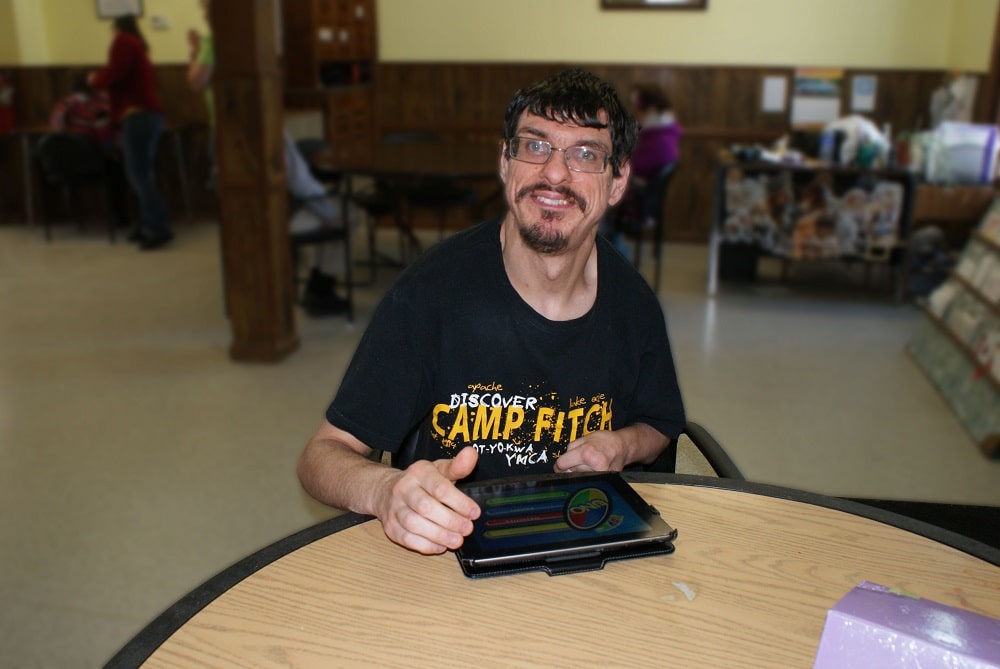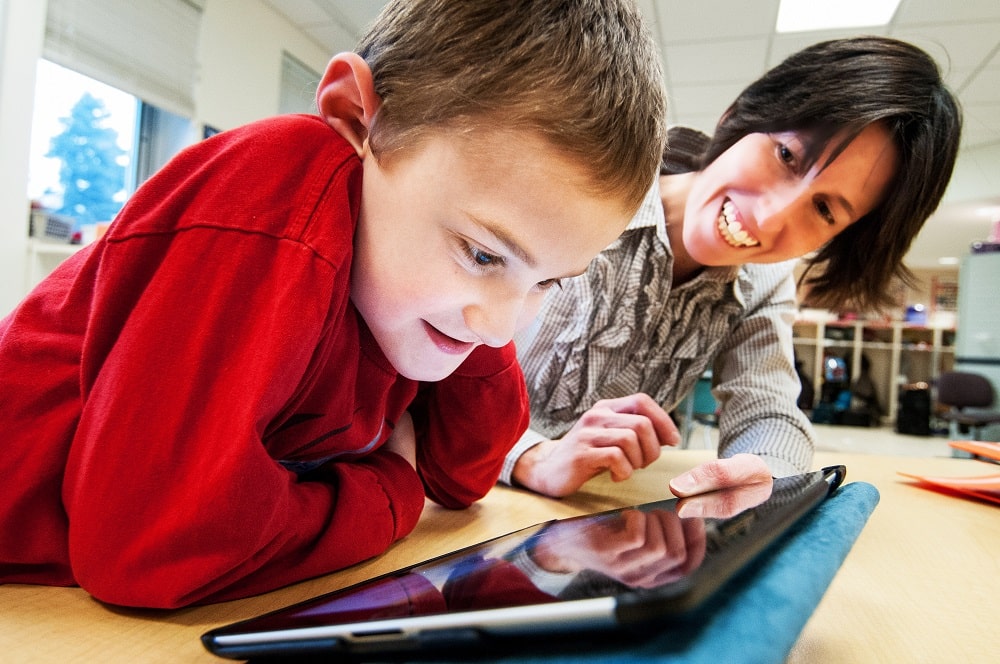iUse, iLearn, iGrow: iPads in the Classroom
iPads for Children
When Lindsay Oliveri tried to play a matching game with Dennis Black, he wouldn’t even touch the set of cards. But when she approached a similar lesson on an iPad, the 7-year-old quickly matched all of the animal pictures and was ready for more. Within a few weeks, Dennis was completing matching games independently and using the tablet to learn and trace the letters of the alphabet.
The iPad, with its many onscreen movements and reinforcing sounds, is showing great promise in helping children with autism learn all kinds of important concepts.
Donations made to the Dr. Gertrude A. Barber Foundation funded the purchase of three iPads for the Elizabeth Lee Black School in 2010. Since then, electronic tablets have become increasingly popular with students and teachers. By the start of the 2012-2013 school year, all 23 classrooms had their own iPads funded by gifts to the Barber Foundation.
Like many other teachers, Lindsay began using the iPads as soon as they became available. She noticed that a lot of the concepts that her students struggled with could be successfully mastered on the new tablet.
“Many of our students have a hard time isolating one finger for tasks,” said Lindsay. “When they approached the iPad using their whole hand, they quickly realized they would wipe out the entire screen. So, they learned to touch the icons with one finger, and now understand how to isolate their finger for other things, too.”
Lindsay and many other teachers use the iPad every day in the classroom for individual lessons and group activities. She has noticed that students also learn how to wait patiently for their turn on the new device. “The iPad is such a strong reinforcement that students are eager to work for it as a reward, and don’t want to do anything that might risk losing their turn.”
The news media, including a recent report on “60 Minutes,” have been reporting on the significant benefits that many children with autism are achieving with the use of iPads integrated into their educational plans. The Barber National Institute has experienced similar results with Dennis and our other students.
Even though there aren’t many apps designed for youngsters with disabilities, faculty worked to find those that would help students work on their classroom goals. “A lot of features from the apps fit our population here at the Barber National Institute,” said Amy Moczulski, speech-language pathologist.
Teachers and speech therapists frequently use the Proloquo2go, an app that does specifically address speech-language issues. “The app functions similar to how other communication devices used at the Institute would function, except with the iPad, it’s quicker and easier,” said Joy
Kevin Cybulski has been so successful with the iPad that he brings in his device from home to use both in school and out in the community. As part of his plan to transition from school to the workplace, Kevin picks up food donations from Fuhrman’s Cider Mill every Tuesday and Thursday and delivers the food to the Erie City Mission.
 Perhaps the most appealing benefit of the iPad is the way it motivates students to participate in class. In one classroom, youngsters who want to use the iPad must get up from their chairs and point at the picture of the device hanging on the wall. For some students, this isn’t easy. But having time with the iPad is often the only incentive that excites students enough to work toward their goals.
Perhaps the most appealing benefit of the iPad is the way it motivates students to participate in class. In one classroom, youngsters who want to use the iPad must get up from their chairs and point at the picture of the device hanging on the wall. For some students, this isn’t easy. But having time with the iPad is often the only incentive that excites students enough to work toward their goals.
Motivation and encouragement can also take place through the use of cause and effect apps on the iPad. The “Pocket Pond,” a virtual pond, makes rippling and splashing noises when students touch the water. The motion and sound of this effect make students want to play on the iPad, and they will often request to use it.
Another app called “Piano Pals” has a virtual keyboard and when the numbered keys are pressed, it will say the number labeled on the key. Not only is this fun for the student, but it also helps to build language concepts.
iPads for Adults
The iPads have also helped our adults. Computer technology is opening up new worlds for 39-year-old Carl Degenhart of Erie. After years of being frustrated by not being able to express himself well with spoken words, Carl was introduced to computers in the Community Habilitation Program at the Barber National Institute. He is using the iPad and a computer to compose his thoughts and learning to email his group home and program staff. Carl’s goal: to be able to use the computer to communicate with his family.
For more about our use of technology in the classroom check out: http://www.yourerie.com/news/news-article/d/story/your-schools-technology-aids-students/31858/VQTriQ_rJk-5Ot90KBo5bQ


